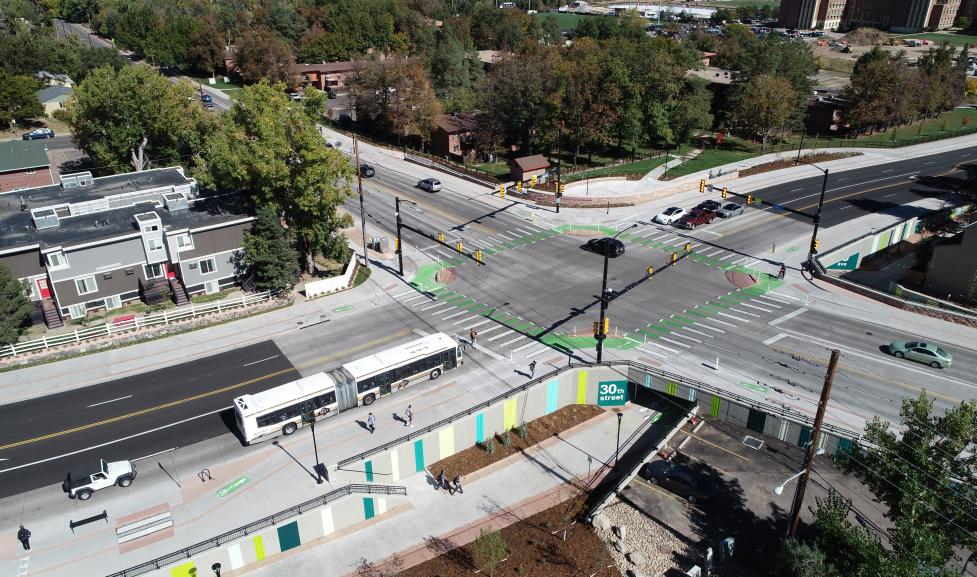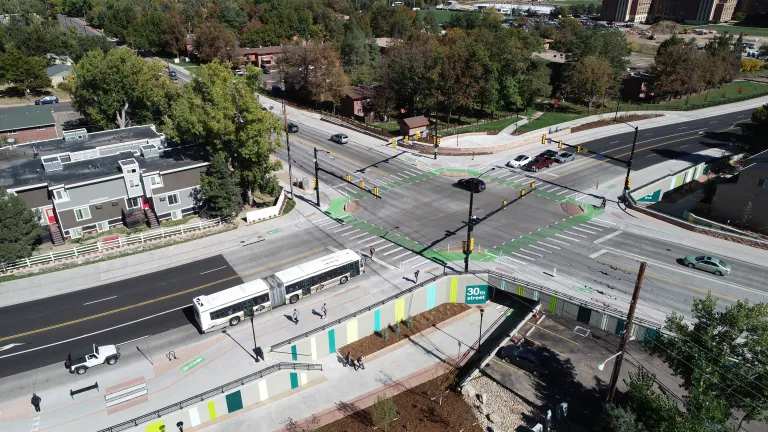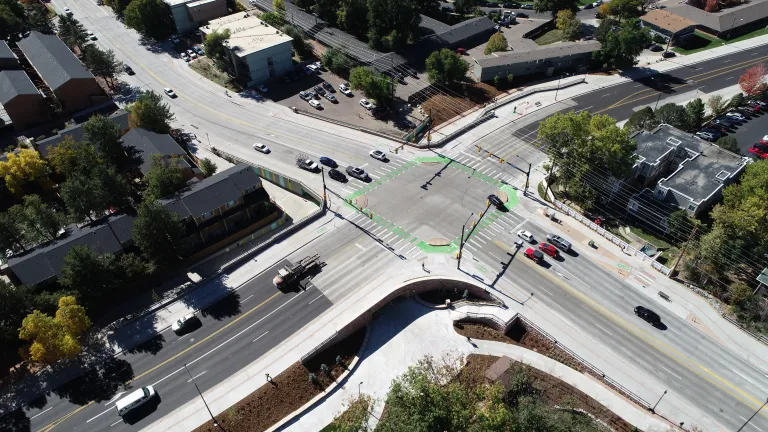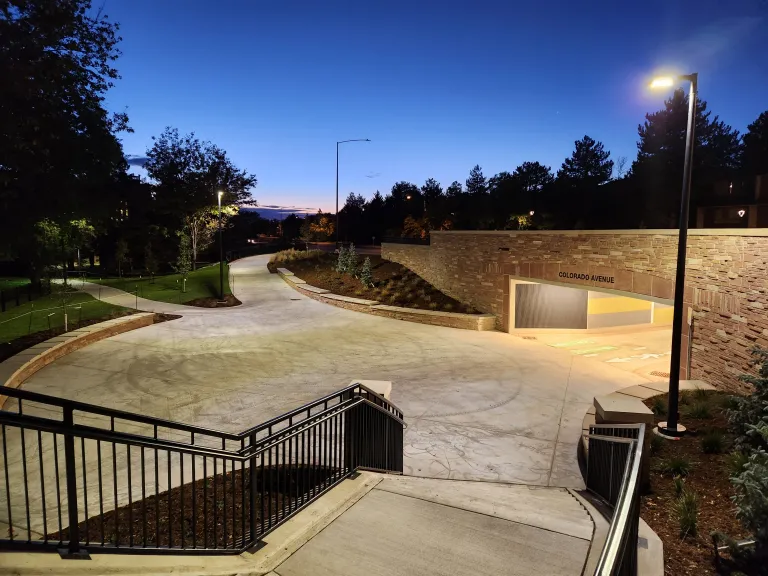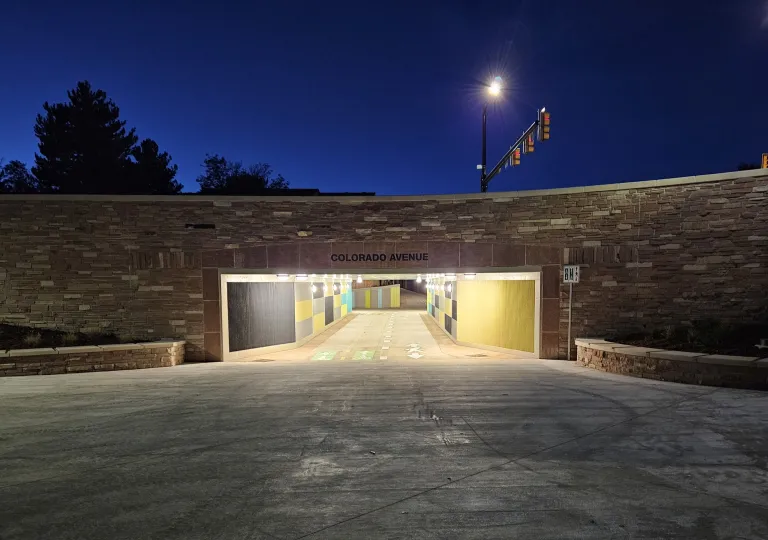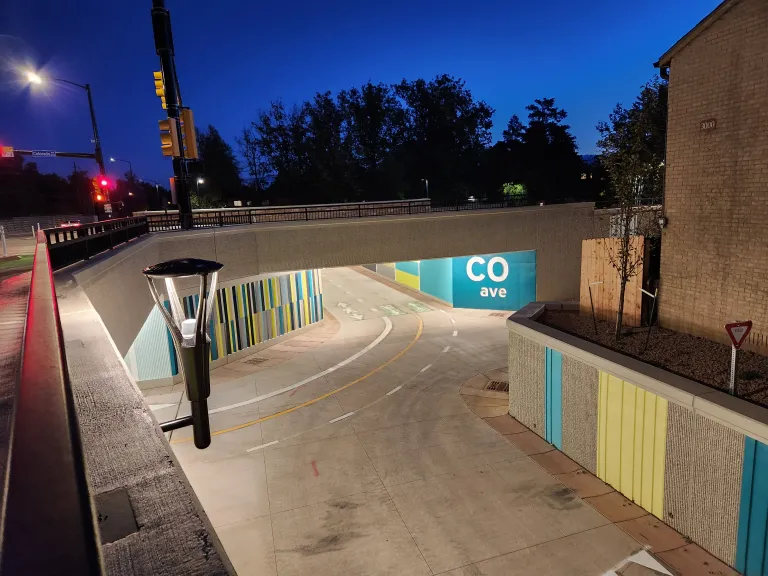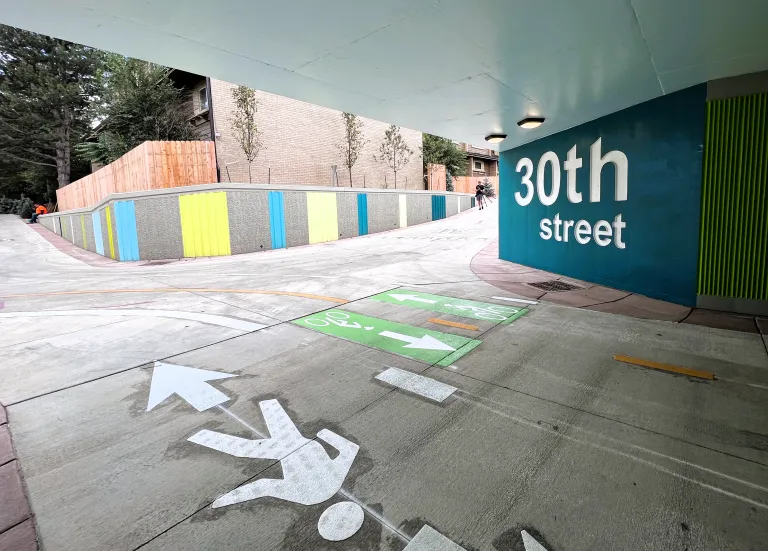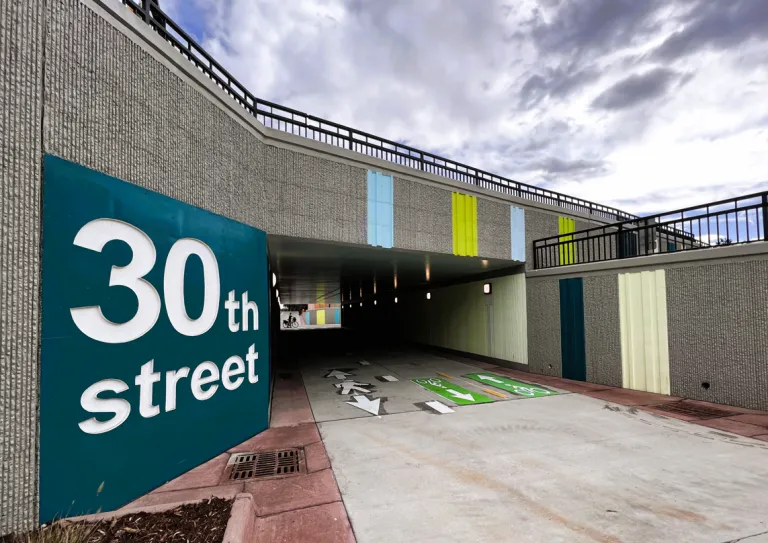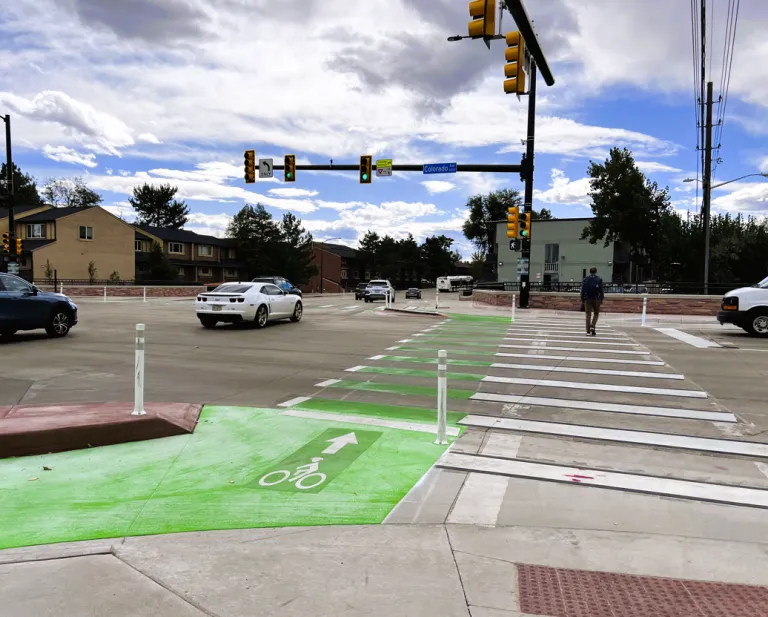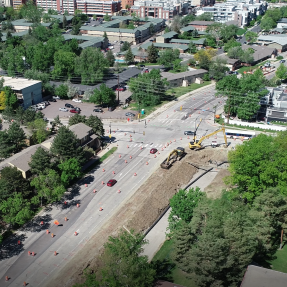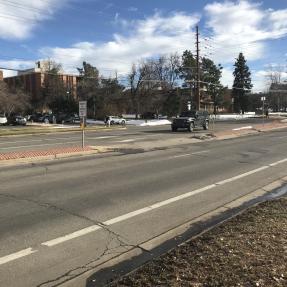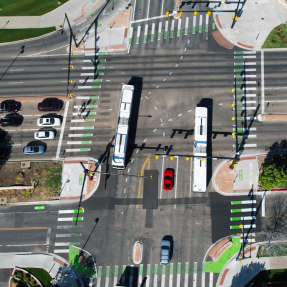Project Overview
The 30th Street and Colorado Avenue intersection is one of the busiest in the city with high volumes of people walking, biking, driving, and taking transit through it daily. It connects two Core Arterial Network corridors and the University of Colorado Boulder Main and East campuses.
This project provides important safety, accessibility, mobility and drainage improvements to the intersection.
